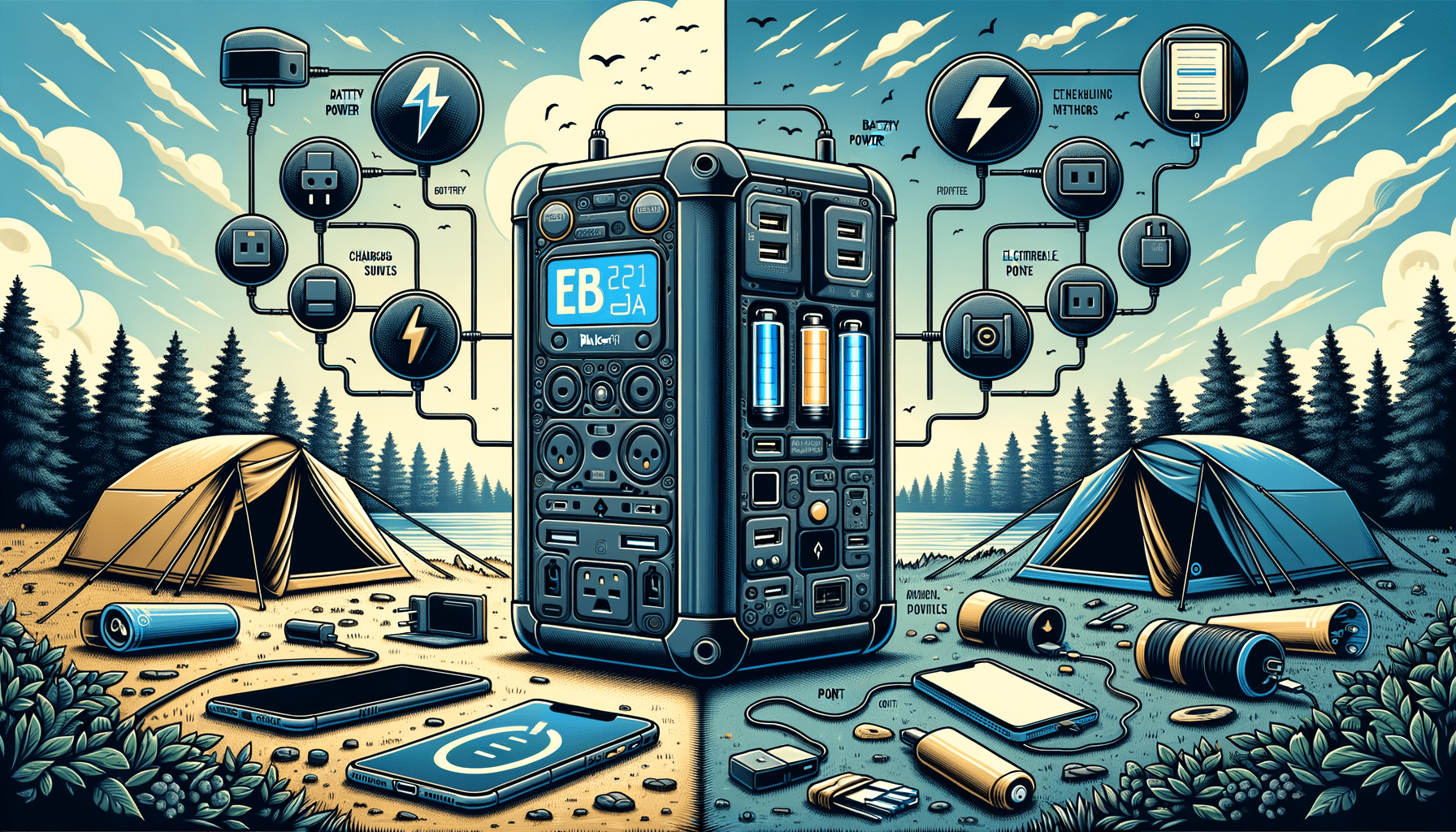Are you in the market for a portable power station that keeps your devices juiced up on the go? Whether you’re an outdoor enthusiast or in need of reliable back-up power, choosing the right power station is crucial. In this article, we’ll pit two popular models against each other: the Jackery 2000 Pro and the Bluetti AC60. We’ll delve into their main features, capabilities, and how they stack up to help you make an informed decision.
Key Specifications at a Glance
| Feature | Jackery 2000 Pro | Bluetti AC60 |
|---|---|---|
| Dimensions & Weight | 15.1in x 10.5in x 12.1in, 43 lbs | 11.42in x 8.07in x 9.21in, ~20.06 lbs |
| Battery Capacity | 2160Wh | 403Wh to 2,015Wh (expandable with modules) |
| AC Output | 2200W continuous (4400W peak) | 600W (1200W with Power Lifting Mode) |
| Charging Speed | AC: 2 hrs, Solar: 2.5 hrs (with 6x 200W panels) | AC: Approx. 1 hr (Turbo Charging), Four charging methods |
| Battery Type & Life | Standard, Up to 10 years | LiFePO4, Over 3,000 cycles |
| Solar Compatibility | SolarSaga 200W panels | PV120/PV200 panels |
| Safety Features | BMS with dual protection chips, temperature detectors | IP65 Dustproof & Water-resistant, BMS |
| Portability | Foldable handle, Shock-resistant level 9 | Compact, lightweight, IP65 rated, aluminum alloy casing |
| Warranty | 3-year, extendable to 5-year | 6-year |

Deep Dive: Exploring Each Product’s Features
Design and Portability
When it comes to taking your power on the go, both the Jackery 2000 Pro and Bluetti AC60 boast portable designs. The Jackery 2000 Pro offers a sturdy, foldable handle and is shock-resistant, while the Bluetti AC60 highlights its lightweight build and robust, water-resistant aluminum alloy casing. While the Jackery is a tad heavier, it ensures the power to take on larger appliances.
Power and Capacity
The Jackery 2000 Pro is a powerhouse with 2160Wh capacity and a strong AC output to match. It can easily run high-consumption devices, something campers and emergency preppers will appreciate. On the flip side, the Bluetti AC60 starts out smaller but is highly scalable with additional battery modules, perfect for those seeking a customizable power solution.
Charging and Battery Life
Charging is a breeze with both stations offering multiple methods. The Jackery 2000 Pro shines with its rapid solar and wall charging capabilities, while the Bluetti AC60’s turbo charging can have you at full capacity incredibly fast. The longevity of the Bluetti’s LiFePO4 battery is impressive, but Jackery’s track record of up to 10 years based on bi-weekly use is equally noteworthy.
Usability and Compatibility
Both units accommodate a range of devices, ensuring you’re covered whether you need to plug in a laptop or a mini-fridge. The Jackery 2000 Pro can power up to 8 devices at once, an excellent feature for group settings. Bluetti’s AC60, while offering fewer ports, includes intelligent BMS and robust environmental resistance, making it a reliable partner for rugged outdoor adventures.
Advanced Features and Warranty
You would expect a modern touch in power stations, and these two don’t disappoint. Jackery 2000 Pro’s LCD smart screen and energy-saving features provide user-friendly interactions. Bluetti AC60’s app integration adds remote control into the mix. When it comes to peace of mind, Bluetti’s 6-year warranty is hard to beat, though Jackery’s extended 5-year warranty is solid protection for your investment.

Frequently Asked Questions (FAQs)
What is Pass-through Charging?
Pass-through charging is a feature that allows you to charge your power station while simultaneously using it to power other devices. Both the Jackery 2000 Pro and Bluetti AC60 support pass-through charging, making them very convenient for continuous use.
Final Thoughts
The Jackery 2000 Pro and Bluetti AC60 cater to different needs but both offer reliable, portable power solutions. The Jackery is ideal for those who need hefty power and fast charging, especially in large group settings or for heftier appliances, while the Bluetti is perfect for adventurers who prioritize lightweight travel, scalability, and robustness against the elements. Your choice will depend on your specific power needs, the devices you plan to use, and where you’ll be using them. Whichever you choose, staying powered in the great outdoors or during an outage has never been easier.


Leave a Reply